Women in Tech Pioneers that We Adore
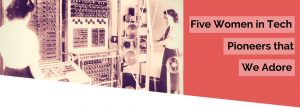
March marks the 40th anniversary of Women’s history month. Established in 1987, this nationwide celebration recognizes the accomplishments, advancements, and contributions of women all over the nation and abroad. To contribute to this celebration, we’re shining a spotlight on 4 women who drove transformational change and paved the way for future generations of women in the tech industry.
Grace Hopper
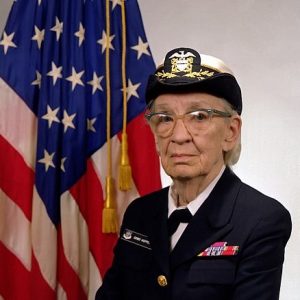
A pioneer in her field and lifetime leader, Grace Hopper was no stranger to breaking barriers and accomplishing the impossible. Her career took off in 1943, when she became part of a select group of women chosen to work for the navy WAVES (Women Accepted for Volunteer Emergency Service) department. Her work on programming the Mark I, Mark II, and Mark III computers earned her a Naval Ordnance Development Award. In 1949, she went on to co-create the UNIVAC I, the first commercial computer to be produced in the United States.
In 1952, Grace created the first compiler despite unanimous pushback and disapproval. It’s unexpected success eventually led her to develop a new programming language known as FLOW-MATIC. This became the basis for the programming language still used in computers today, known as COBOL.
For four decades, Grace continued crucial work in advancing technology and paving the way for women in tech. Her contributions earned her numerous awards and honors which led to her being the first woman to receive the “Computer Science Man of the Year award in 1969 and become a Distinguished Fellow of the British Computer Society in 1973.
Jean Jennings Bartik
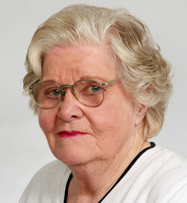 Before she was programming computers, Jean Bartikk was the only female with a mathematics major studying at Northwest Missouri State University. Shortly after graduating, she was recruited by the U.S. Army to work as a “human computer”, calculating artillery firing trajectories by hand.
Before she was programming computers, Jean Bartikk was the only female with a mathematics major studying at Northwest Missouri State University. Shortly after graduating, she was recruited by the U.S. Army to work as a “human computer”, calculating artillery firing trajectories by hand.
Her greatest breakthrough came in 1945 when she worked with a team of five other women to program the ENIAC (Electronic Numeric Integrator and Computer), the army’s first all electronic digital computer. Without the help of coding languages and programming tools, the team was able to transform the ENIAC into a computer that could run sequential programs and calculate complex calculus equations in mere seconds.
Jean later went on to program the BINAC and UNIVAC computers, continuing her career in the computer industry until 1951. She was recognized for her accomplishments in 1997, when she was inducted into the Women in Technology International Hall of Fame.
Hedy Lamarr
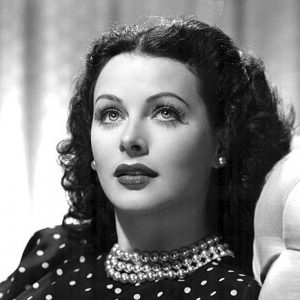 Also known for being a Hollywood starlet, Hedy Lamarr was a dedicated inventor who helped to develop a communication system which became a precursor to the technology we now use in bluetooth, wifi, and GPS. Her desire to invent began early on, leading her to create an improved traffic light and a pill that could turn a glass of water into a carbonated beverage.
Also known for being a Hollywood starlet, Hedy Lamarr was a dedicated inventor who helped to develop a communication system which became a precursor to the technology we now use in bluetooth, wifi, and GPS. Her desire to invent began early on, leading her to create an improved traffic light and a pill that could turn a glass of water into a carbonated beverage.
In 1940, Heddy became interested in helping the allies during the ongoing war. Working with film composer George Antheil, Hedy developed a technology known as the Frequency Hopping Spread Spectrum (FHSS). This communication system implemented rapid changes in radio frequencies for the purpose of evading signal detection and interference. The system was aimed to help the Allies retain control of torpedos, by reducing the chances of having radio controls be discovered, jammed, or deciphered.
Though Hedy gave her patent to the US Army in 1943, it wasn’t until decades later, during the Cuban Missile Crisis of 1962, that the technology was actually put to use. Today, Hedy is recognized as true tech visionary who shattered stereotypes and redefined the role of women as entrepreneurs and inventors.
Mary Jackson
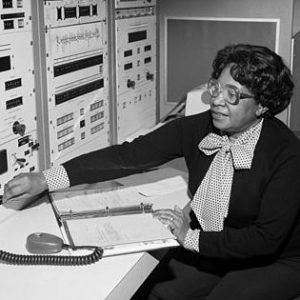 In an era where female engineers were a rarity, Mary Jackson became NASA’s first African-American female engineer and a notable figure in American space history.
In an era where female engineers were a rarity, Mary Jackson became NASA’s first African-American female engineer and a notable figure in American space history.
Graduating with a dual degree in Math and Physical sciences in 1942, Mary began her career as a math teacher and worked several other jobs before being being employed as a research mathematician by the National Advisory Committee for Aeronautics (NACA). From day one, Mary had her work cut out for her as she faced segregation and mistreatment in the workplace. However, her hard work earned her a position at the Compressibility Research Division followed by offer to take part in a training program that would promote her to the position of aeronautical engineer.
Initially unable to attend the program due to segregated classes, Mary applied for special permissions to complete the training courses, becoming the first African-American female engineer to work at NASA. For the next 21 years, Mary continued her engineering career conducting research and authoring numerous reports.
In 1979, Mary stepped down from her senior role to become the Women’s program manager, working to empower women and minorities by providing equal opportunities for getting hired or promoted as the next generation of NASA scientists, engineers, and mathematicians.
With many more figures who have made significant contributions to the tech industry, our list is far from exhaustive. As more women continue to make strides in tech-centered roles, companies will need to continue to play a crucial role in increasing diversity and inclusion in the workplace.